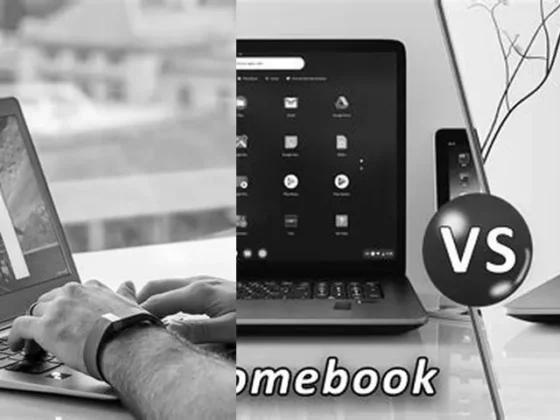Can VirtualBox Run on Chromebook? Exploring Compatibility and Installation Guide – Are you a proud owner of a Chromebook, but find yourself yearning for the versatility and functionality of VirtualBox? Well, you’re in luck! In this blog post, we will dive deep into the compatibility of VirtualBox with Chromebooks and explore how you can unleash the power of virtualization on your trusty device. Whether you’re a developer looking to run Windows applications or simply curious about expanding the capabilities of your Chromebook, we’ve got you covered. Get ready to embark on a virtual journey like never before, as we unravel the secrets of running VirtualBox on your Chromebook. So, grab your Chromebook and let’s get started!
Exploring the Compatibility of VirtualBox with Chromebooks
Chromebooks have risen in popularity due to their simplicity, security, and affordable price point. These features make them an excellent choice for a range of users, from students to entrepreneurs. However, one question that frequently arises among power users and developers is whether these lightweight laptops have the capability to run complex software like VirtualBox. Let’s dive into the facts and explore how VirtualBox can extend the functionality of Chromebooks.
Understanding VirtualBox and Its Versatility
VirtualBox is a powerful x86 and AMD64/Intel64 virtualization product for enterprise as well as home use. It is an immensely versatile tool that can be installed on a host of operating systems, including Windows, Linux, macOS, Solaris, and FreeBSD. This wide range of compatibility underscores the software’s flexibility in creating virtual machines (VMs) with various operating systems such as Windows, Linux, macOS, Solaris, FreeBSD, and Novell Netware.
VirtualBox Installation on Chromebooks
Can VirtualBox run on Chromebook? The answer is a resounding yes. VirtualBox can indeed be installed on Chromebooks, expanding their capabilities beyond the basic functionality of Chrome OS. This opens up a plethora of opportunities for users who want to run alternate operating systems or test software in a secure environment.
Step-by-Step Guide to Installing VirtualBox on Chromebooks
- Enable Linux (Beta) on your Chromebook from the settings.
- Update your Linux (Beta) environment to ensure you have the latest packages.
- Download the appropriate VirtualBox package for your Chromebook’s architecture from the official VirtualBox website.
- Install the downloaded package using the Linux terminal.
Once VirtualBox is installed, you can launch it from the terminal or the app drawer, depending on your Chromebook model.
Installing the Extension Pack
To enhance the capabilities of VirtualBox, you may need to install the VirtualBox Extension Pack. This can be done by visiting the VirtualBox website, downloading the latest version of the extension pack, and following the on-screen instructions to install it after opening the downloaded file with VirtualBox.
Creating Your First Virtual Machine
With VirtualBox installed on your Chromebook, the next step is to create a virtual machine. This is a straightforward process:
- Open VirtualBox.
- Click on the ‘New’ button.
- Follow the on-screen instructions to specify the parameters for your new virtual machine, like the type of operating system and the amount of RAM.
As of March 15, 2023, the process remains user-friendly and accessible even to those who are new to virtualization.
Running Windows on a Chromebook Virtual Machine
One of the most common uses for VirtualBox on Chromebooks is to run a Windows virtual machine. This can be particularly useful for those who need access to Windows-specific software or prefer the Windows interface for certain tasks.
Steps to Create a Windows Virtual Machine on Chromebook
- Download a Windows ISO image from the official Microsoft website.
- In VirtualBox, create a new virtual machine and select ‘Windows’ as the type.
- Allocate system resources like RAM and storage space to your new VM.
- Follow the prompts to attach the downloaded ISO image as the boot device.
- Proceed with the Windows installation process as you would on a traditional PC.
Once the installation is complete, you’ll be able to run Windows within a window on your Chromebook, just as you would on any other VirtualBox host system.
Enhancing Chromebooks for Development
Chromebooks are not traditionally associated with heavy-duty coding or app development, but with the integration of Linux command line tools, code editors, and IDEs, they can be transformed into a lightweight development machine. VirtualBox further augments this by allowing developers to test their applications across different operating systems without needing multiple physical devices.
Tools and Tips for Coding on Chromebooks
- Utilize the built-in Linux terminal to access a suite of development tools.
- Install code editors like Visual Studio Code directly on your Chromebook.
- Use VirtualBox to test your applications in environments that mirror your users’ systems.
This shift significantly enhances the value proposition of Chromebooks, especially for developers looking for a cost-effective, secure, and versatile coding platform.
The Role of ChromeOS and ChromeOS Flex in Virtualization
ChromeOS and ChromeOS Flex devices amplify their functionality by supporting virtual machines through ChromeOS itself. This feature is particularly beneficial for breathing new life into older hardware, providing a rejuvenated user experience without the need for costly hardware upgrades.
Virtualization as a Catalyst for Reviving Old Laptops
ChromeOS Flex, which can be installed on a wide array of devices, combines the efficiency of ChromeOS with the flexibility of VirtualBox, allowing users to repurpose outdated laptops into powerful virtual machine hosts. This not only extends the lifespan of existing hardware but also promotes sustainability by reducing electronic waste.
Conclusion
The integration of VirtualBox onto Chromebooks is a game-changer, shattering the misconception that Chromebooks are only suitable for basic tasks. It enables users to run multiple operating systems, develop and test applications, and maximize the utility of their devices. Whether for education, development, or personal use, the ability to run VirtualBox on Chromebooks is a testimony to the versatility and adaptability of modern technology.
As we continue to push the boundaries of what’s possible with lightweight and affordable devices, the role of virtualization in achieving greater computing flexibility becomes ever more apparent. Chromebooks, once seen as mere portals to the internet, are now burgeoning into powerful machines capable of satisfying a broader spectrum of computing needs.
FAQ & Related Questions about Can Virtualbox Run On Chromebook?
Q: Can VirtualBox run on a Chromebook?
A: Yes, VirtualBox can run on a Chromebook. It allows you to create virtual machines with various operating systems.
Q: What operating systems can be used with VirtualBox on a Chromebook?
A: VirtualBox on a Chromebook supports various operating systems, including Windows, Linux, macOS, Solaris, FreeBSD, and Novell Netware.
Q: Can I install Linux command line tools, code editors, and IDEs on a Chromebook?
A: Yes, you can install Linux command line tools, code editors, and IDEs on a Chromebook. This allows for coding and app development.
Q: How do I install VirtualBox on a Chromebook?
A: To install VirtualBox on a Chromebook, you need to visit the VirtualBox website and download the latest version of the VirtualBox extension pack. Once downloaded, open the file with VirtualBox and follow the on-screen instructions to install it.
Q: Can Chromebooks run virtual machines?
A: Yes, Chromebooks can run virtual machines. ChromeOS, the operating system used on Chromebooks, is capable of running virtual machines and can be used for various purposes including development and testing.


